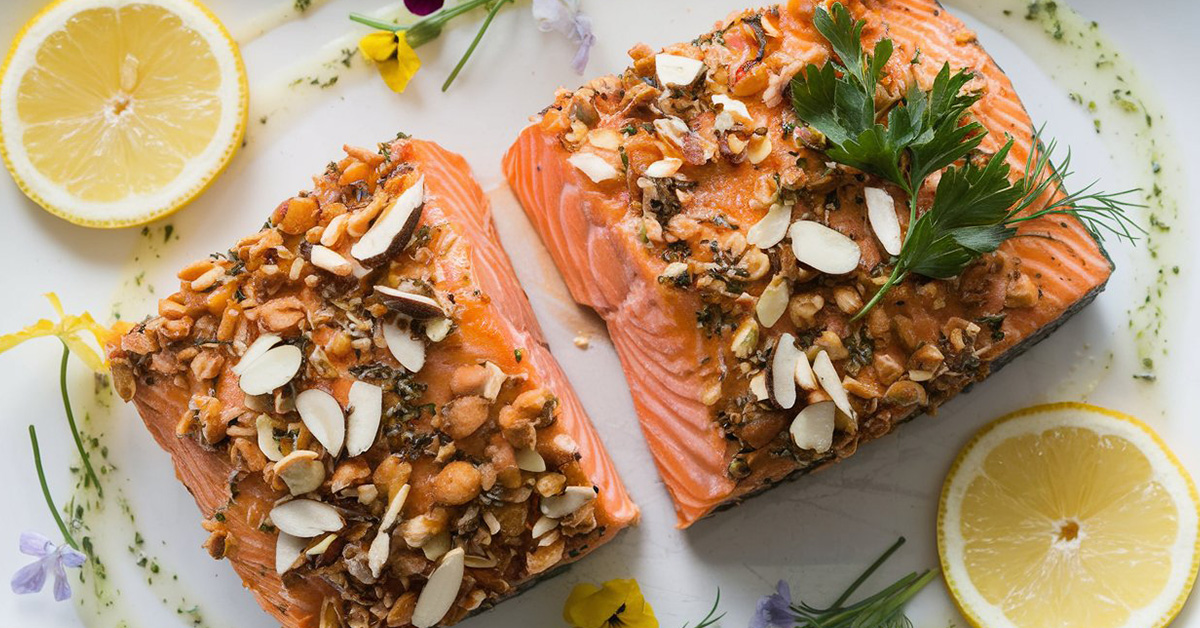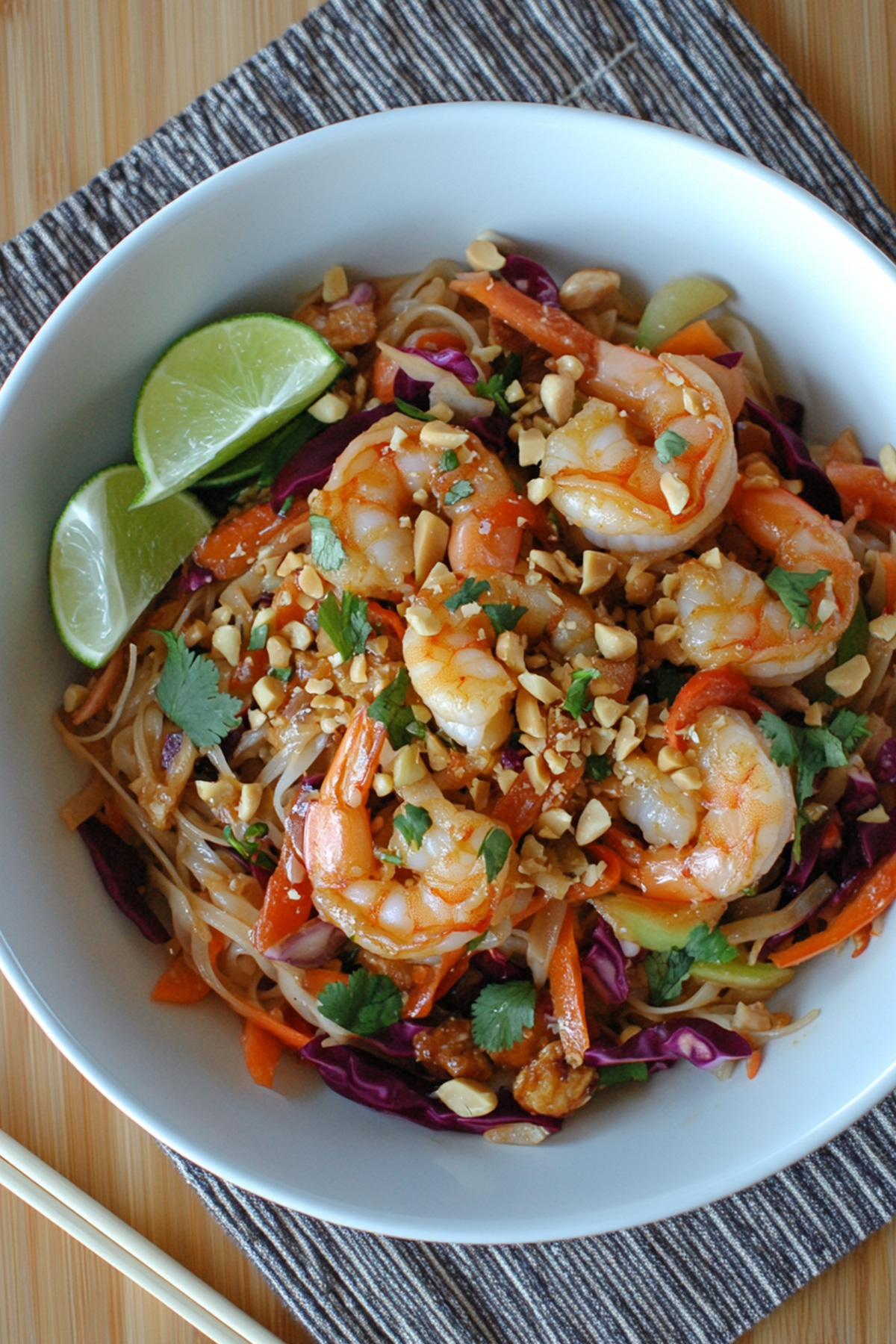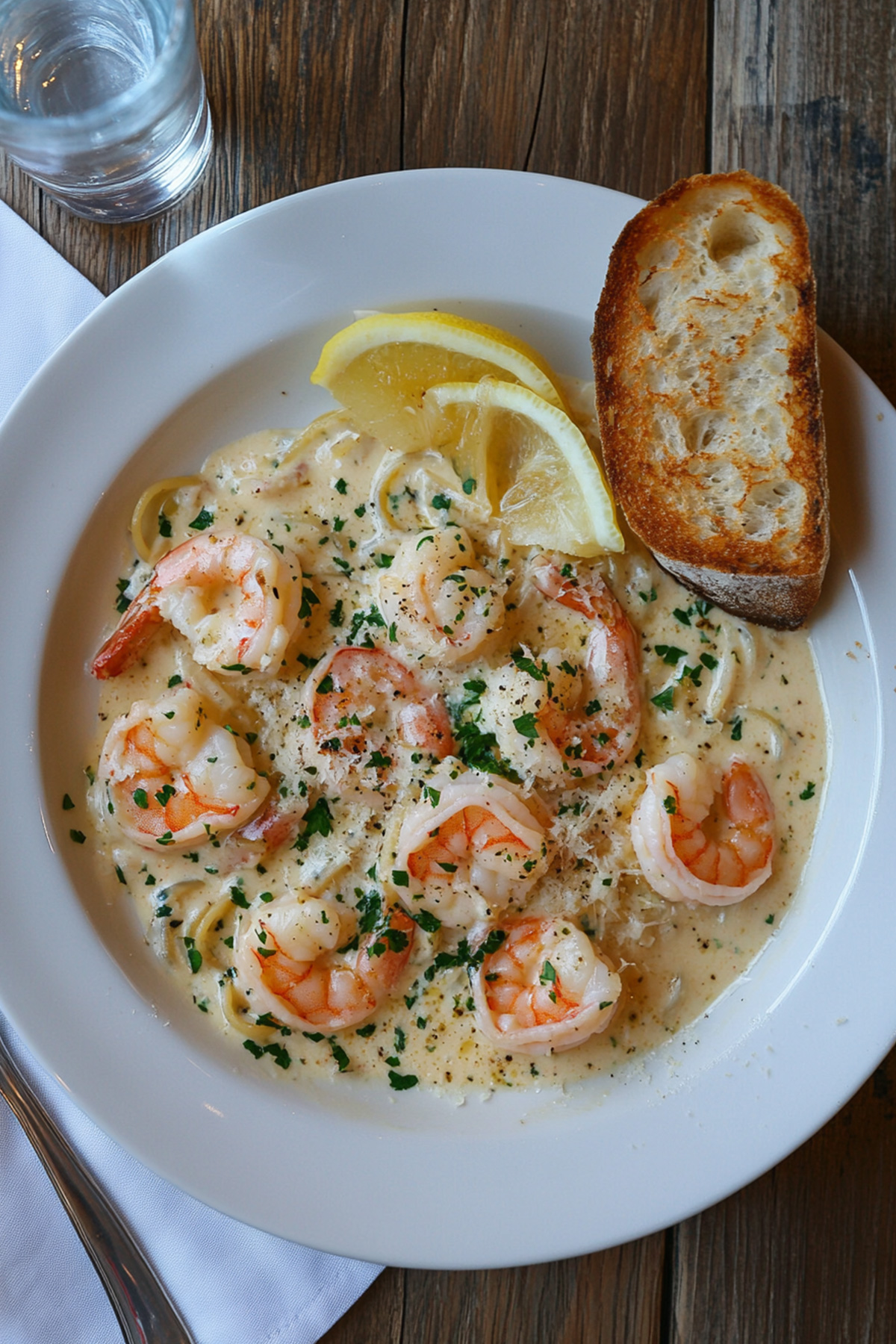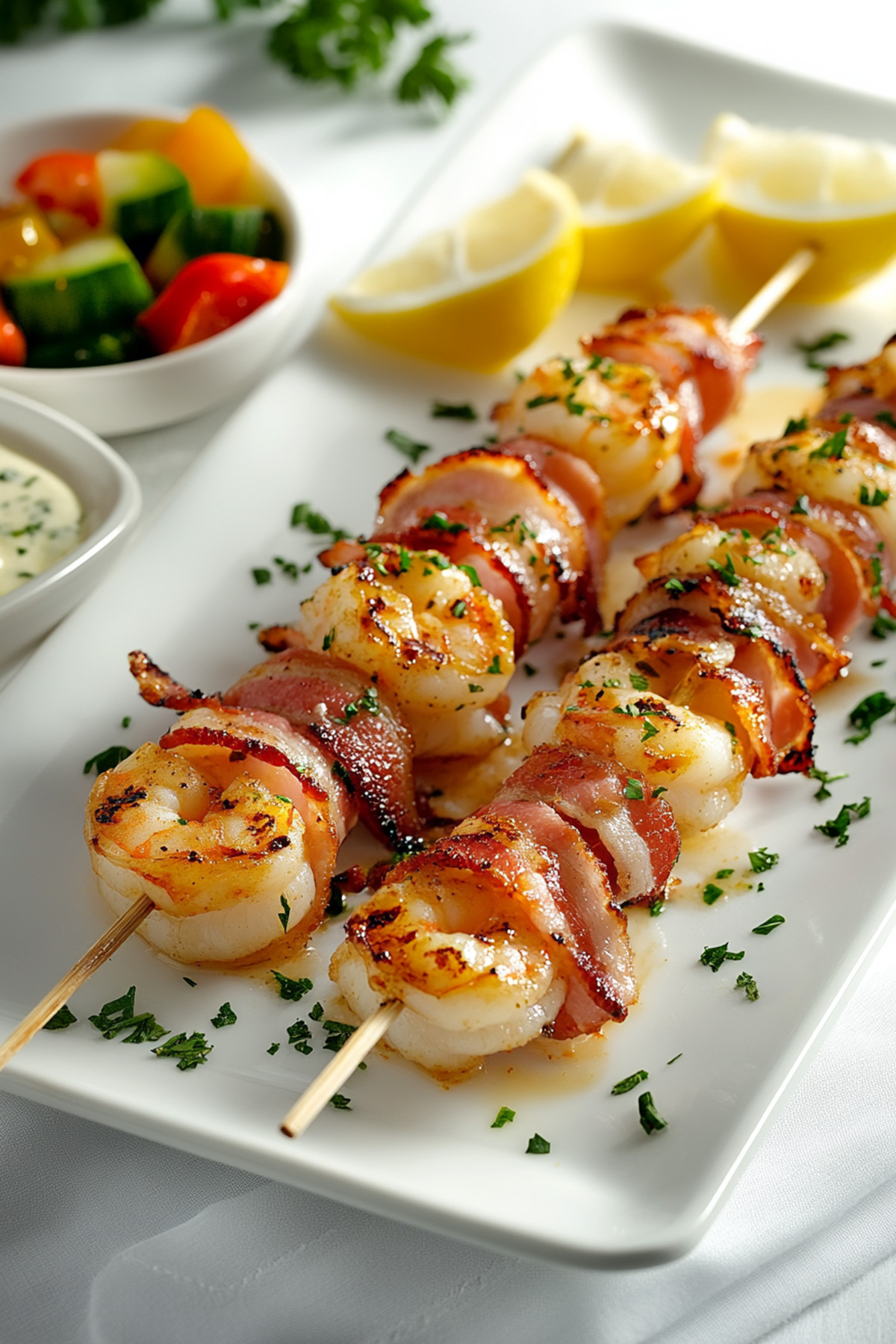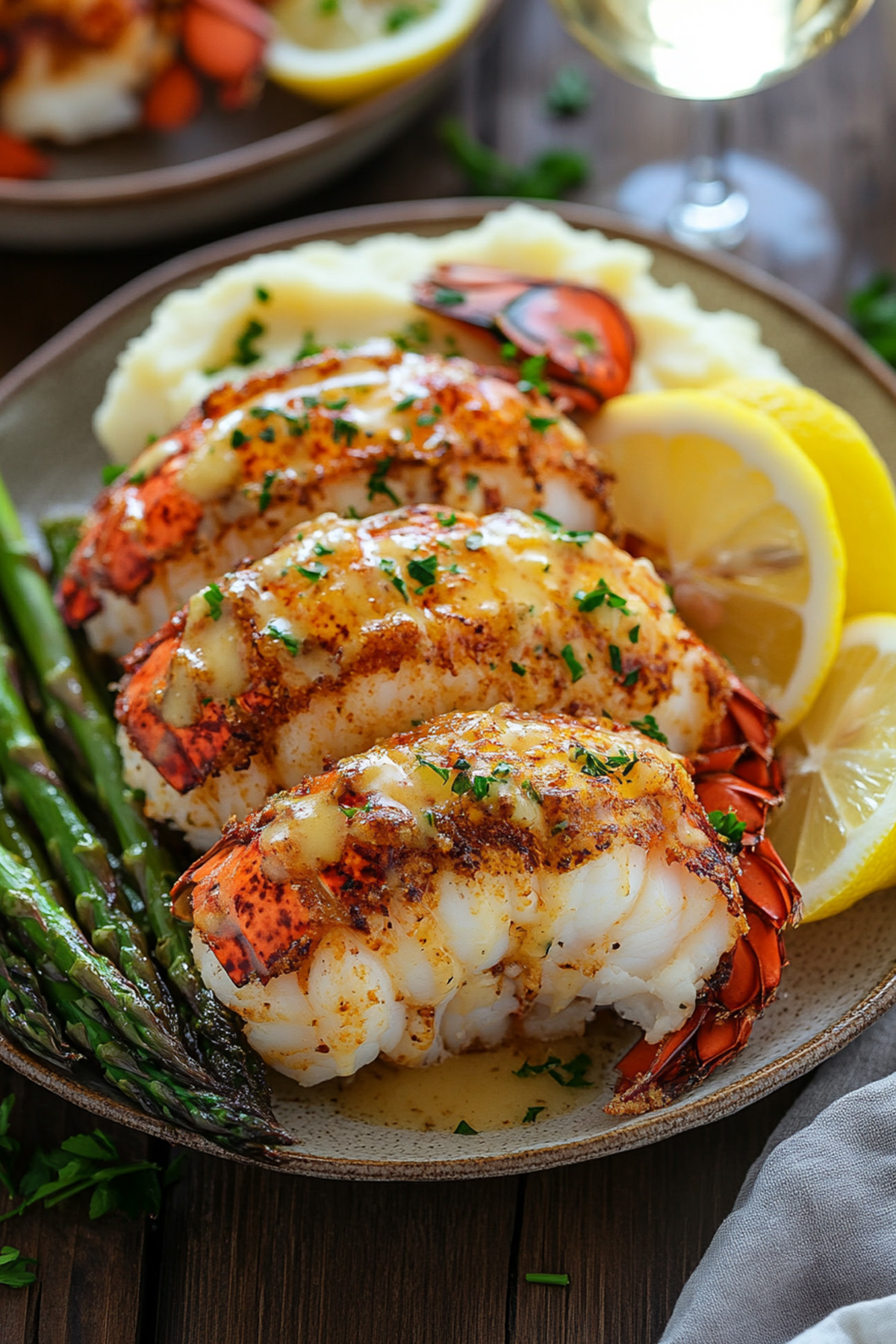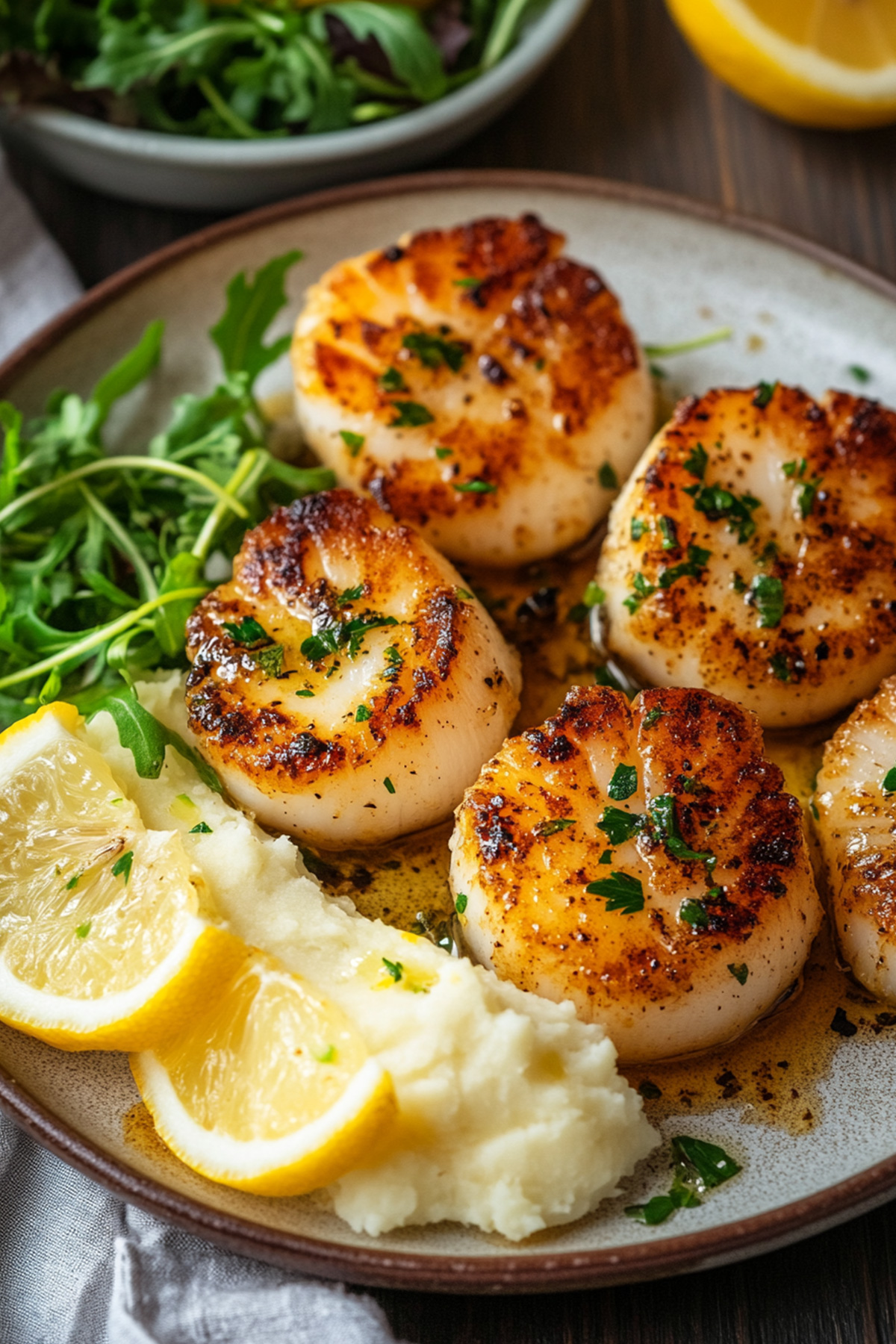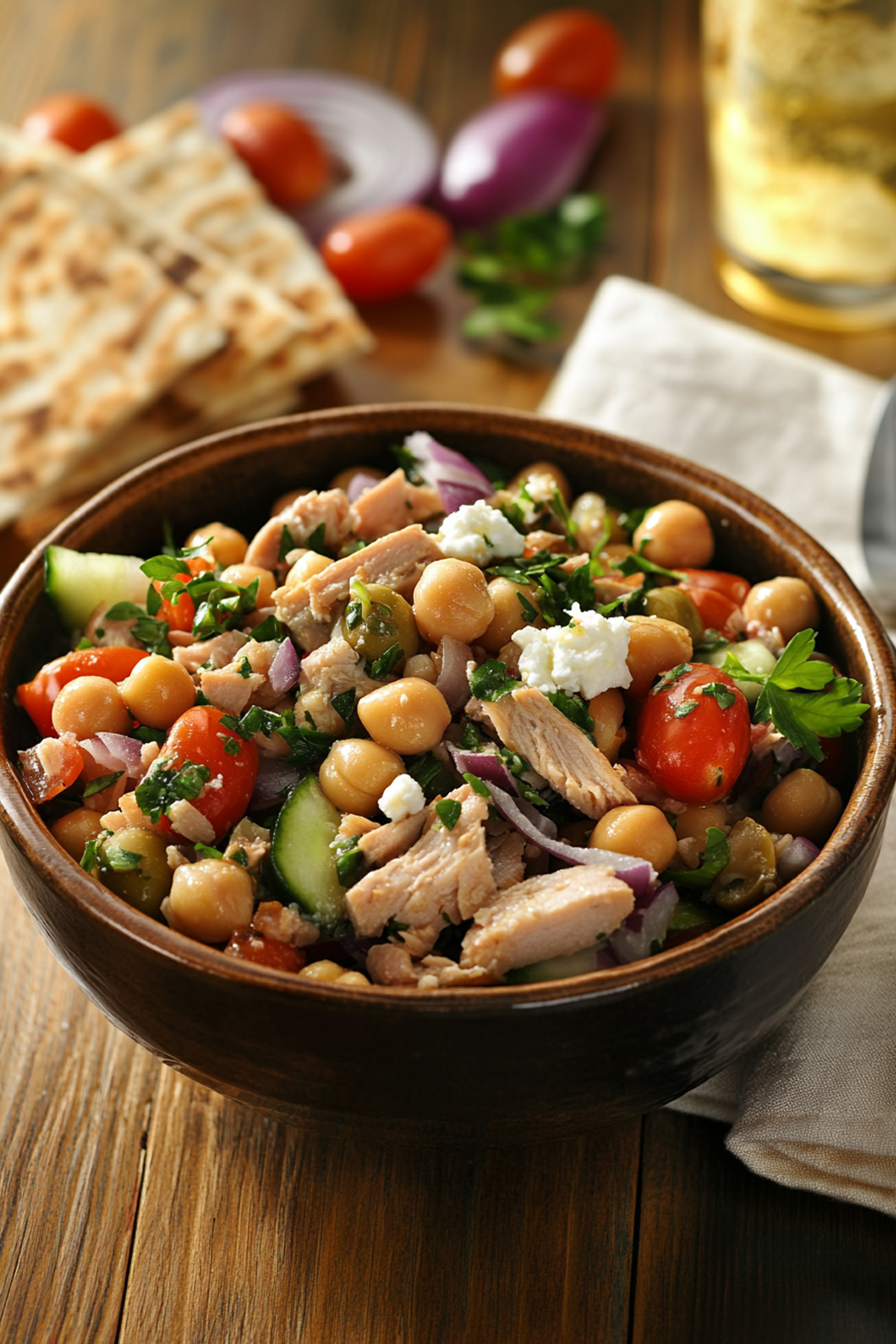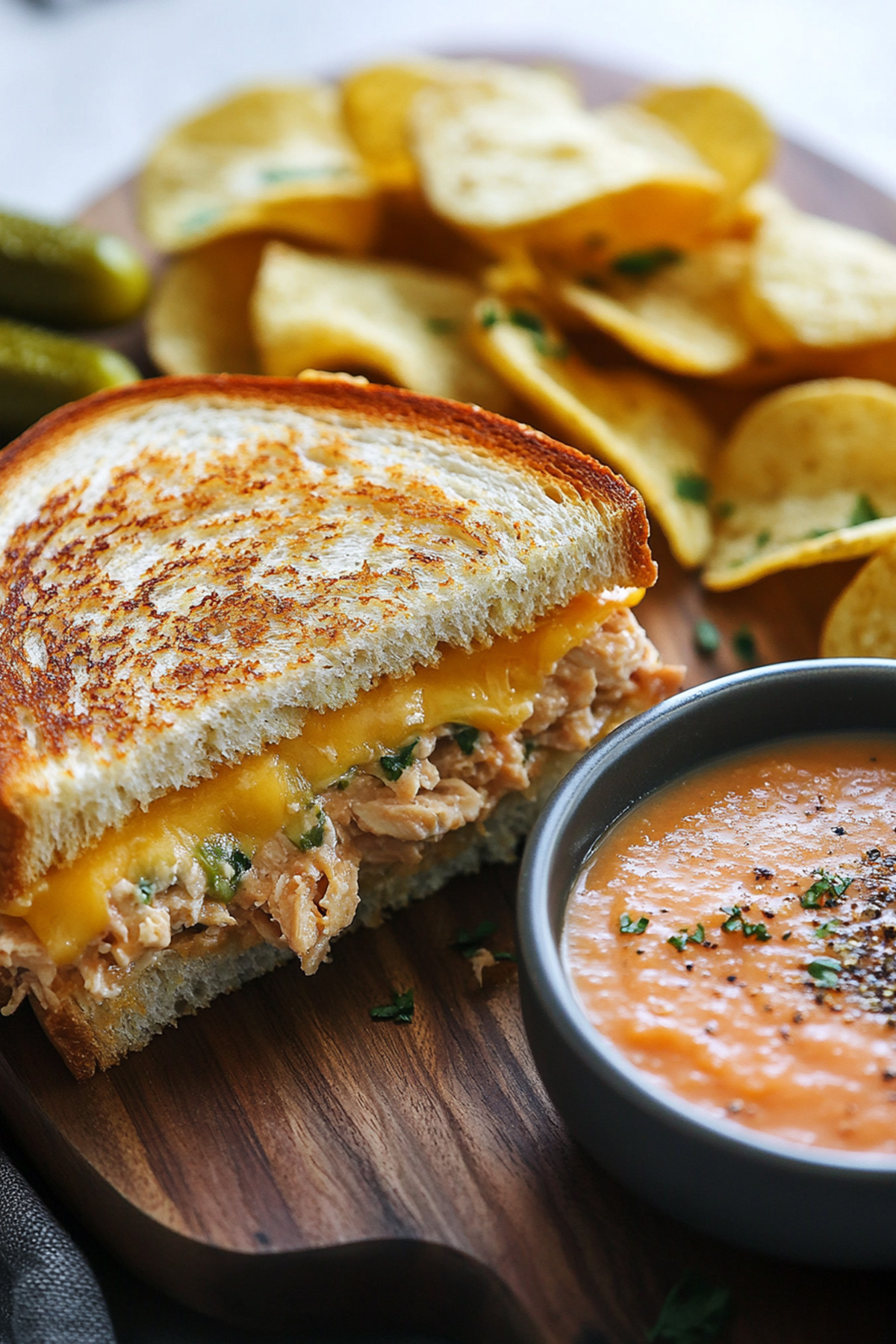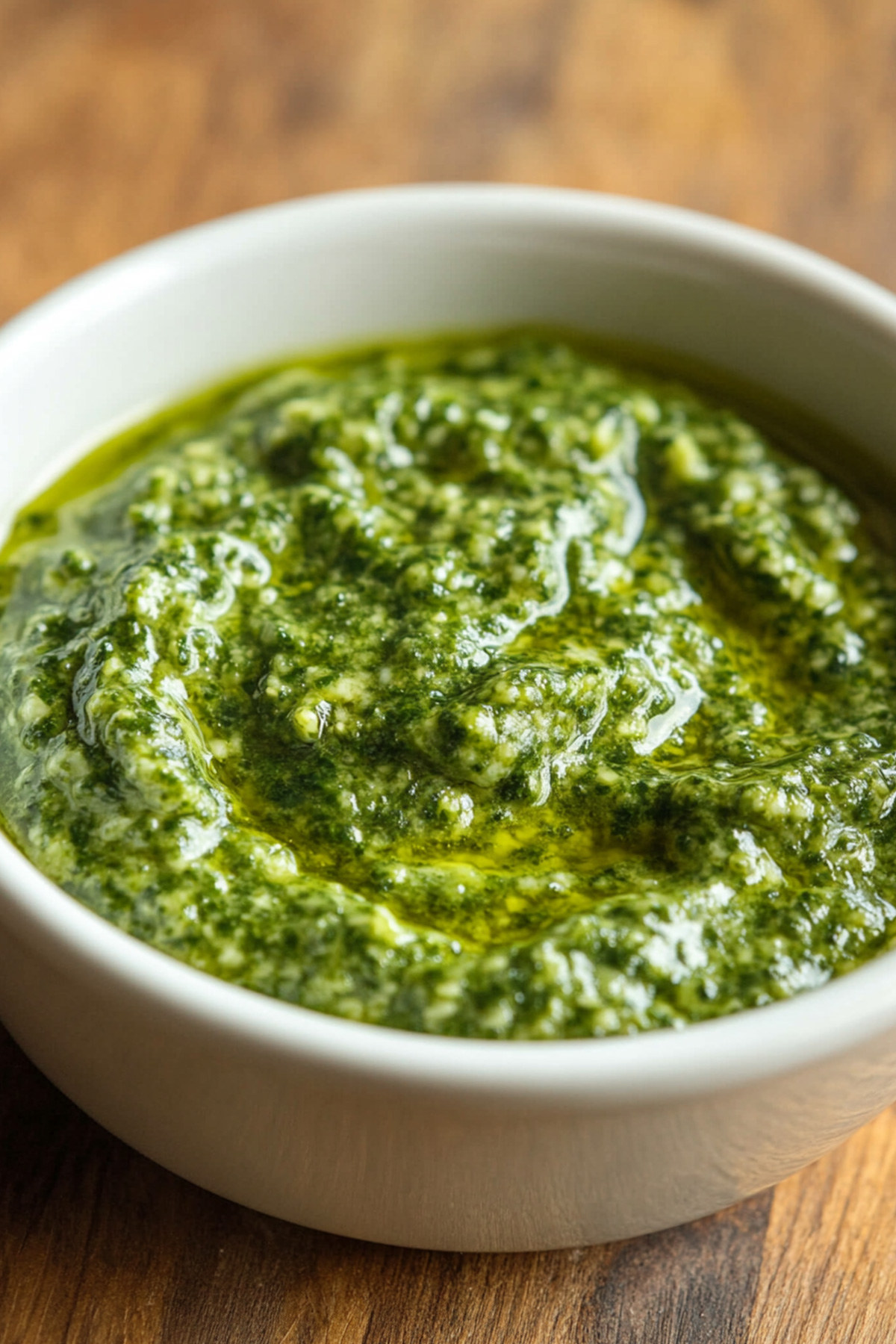Disclosure: As an Amazon Associate and participant in other affiliate programs, we earn from qualifying purchases. We only recommend products we believe will provide value to our readers.
Want to make restaurant-quality seafood at home? Almond crusted salmon brings together fresh fish’s rich flavor and toasted nuts’ satisfying crunch. This elegant yet simple meal will change your dinner routine with little effort but amazing results.
This complete guide shows you how to make the perfect almond crusted salmon. You’ll learn professional techniques to select fresh ingredients and create the ideal crust texture. The result is salmon that stays crispy outside and tender inside. We’ll show you the right tools to use and help you avoid common mistakes. You’ll also get exciting recipe variations to keep this dish interesting every time you serve it.
Table of Contents
What is Almond Crusted Salmon?
This almond crusted salmon recipe turns an ordinary fish into something special. The combination of tender salmon and crunchy nuts creates an exceptional dining experience. The recipe starts with fresh salmon filets that get a coating of honey and Dijon mustard, followed by a crispy almond crust.
The recipe’s adaptability makes it stand out. You can play around with different flavors and still keep these essential components:
- A honey-Dijon base layer that helps stick the crust
- A crunchy topping from chopped almonds mixed with parmesan or nutritional yeast
- Fresh salmon filets that serve as the base
The dish shines through its straightforward preparation. The salmon’s natural butteriness works perfectly with the nutty crunch of almonds. The honey-Dijon layer adds just enough sweetness and tang to bring all flavors together. This recipe delivers restaurant-quality results without much effort, perfect for both special occasions and quick weeknight dinners.
Health Benefits of Almond Crusted Salmon
Almond crusted salmon stands out as a powerhouse of nutrients that boost your overall health. Each serving delivers an impressive 37 grams of protein that helps build strong muscles and maintain healthy bones.
This nutritional champion offers several key benefits:
- An excellent source of Vitamin D (124% of your daily needs)
- Rich in heart-healthy omega-3 fatty acids
- Packed with B-vitamins, including B12, B6, and niacin
- Contains selenium (100% of daily value)
- Provides healthy fats from both salmon and almonds
The almond crust adds more than just a delightful crunch to your meal. These nuts enhance the dish with fiber, vitamin E, and magnesium. Your body also receives a healthy dose of potassium (15% of daily value) and phosphorus (67% of daily value) that support muscle and nerve function effectively.
The macros in this dish will impress health-conscious eaters. A serving contains just 317 calories, with an ideal balance of 49% fat and 47% protein. This protein-fat combination keeps hunger at bay longer, making it a perfect choice for a satisfying and nutritious meal.
Tips for Choosing the Best Salmon for this Recipe
The right salmon selection plays a significant role in creating the perfect almond crusted salmon. Fresh and frozen options both work great, but they have some distinct differences. Fresh farmed Atlantic salmon gives you the best results with its tender texture and no fishy smell that you might get with frozen varieties.
These factors matter most in picking your salmon:
- Skin-on filets keep the moisture locked in during cooking
- Get 4-6 ounce portions for each person
- Pick bright, firm flesh without brown spots
- Frozen salmon needs complete thawing before cooking
Buying in bulk from stores like Costco and portioning it yourself makes sense if you plan to make almond crusted salmon often. This economical solution lets you freeze individual portions to use later. Note that frozen salmon should thaw completely in your refrigerator overnight to get the best results.
Many people say fresh and frozen salmon taste the same since most “fresh” salmon has been frozen before. But you might notice slight texture differences. Fresh salmon usually turns out softer and more tender, which works great for this recipe. Still, good quality frozen salmon can match these results when you thaw and prepare it properly.
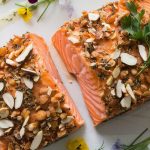
Almond Crusted Salmon
- Total Time: 30 minutes
- Yield: 4 servings 1x
Description
A sophisticated salmon recipe that combines fresh salmon fillets with a flavorful crust made of chopped roasted almonds, honey, Dijon mustard, garlic, lemon juice, and herbs. The fish is baked at 400°F until the almond coating becomes golden brown and crispy while the salmon remains moist and tender underneath.
Ingredients
- 4–6 salmon filets (6 ounces each)
- ⅓ cup chopped roasted unsalted almonds
- 2 tablespoons honey
- 2 minced garlic cloves
- 1 tablespoon Dijon mustard
- 1 tablespoon lemon juice
- 2 tablespoons extra virgin olive oil
- ½ teaspoon red pepper flakes
- ¼ cup chopped fresh parsley
- Salt and pepper to taste
Instructions
- Set your oven temperature to 400°F (200°C). Take a baking sheet and line it with parchment paper.
- Mix these ingredients in a small bowl: chopped almonds, honey, Dijon mustard, minced garlic, lemon juice, olive oil, red pepper flakes, and parsley. Stir everything until you have a uniform mixture.
- Take your salmon filets and pat them dry with paper towels. Place them on your lined baking sheet.
- Spread the Coating: Take the almond mixture and spoon it carefully over each salmon filet. Make sure the top has an even coating.
- The salmon needs 15-20 minutes in the oven. Cook until it reaches an internal temperature of 145°F (63°C). Your cooking time might vary based on your filet’s thickness.
The finished almond-crusted salmon should have a beautiful golden-brown crust with a flaky interior. Give it a few minutes to rest before you serve it.
- Prep Time: 10 minutes
- Cook Time: 20 minutes
- Category: Seafood
- Method: Baking
- Cuisine: American
Essential Tools for Making Almond Crusted Salmon
The right kitchen tools make all the difference when creating perfect almond crusted salmon. Let’s look at everything you need to prepare this delicious dish with confidence.
Your must-have tools include:
- A stainless steel skillet or quality baking pan
- A mini food processor or rolling pin for crushing almonds
- Two small mixing bowls
- A sharp chef’s knife
- Measuring spoons and cups
A high-quality stainless steel pan that goes from stovetop to oven should be your kitchen’s star player. You can create your almond crusted salmon as a one-pan meal easily, which makes cleanup a breeze. A regular nonstick skillet and a glass baking dish will work just fine if you don’t have an oven-safe skillet.
The almond crust preparation offers several options. Your mini food processor will crush the almonds quickly, but placing them in a plastic bag and using a rolling pin works just as well. A sharp chef’s knife on a cutting board gives great results too if that’s your preference.
Note that you don’t need professional-grade equipment to create restaurant-worthy almond crusted salmon. A good-quality pan and reliable tools for crushing almonds will set the foundation for your success.
How to Prepare Almonds for the Perfect Crust
The perfect almond crust begins with the right nuts. Raw almonds make the best choice, as blanched varieties lack the strong flavor and texture needed for this recipe.
Here’s how to create that perfect crunchy coating:
- Use a food processor to chop evenly and quickly
- Watch the texture – you want coarse chunks, not powder
- Mix larger and smaller pieces to create interesting texture
- Stop processing once you see varied-sized pieces
- Hand-chopping gives you more control
Short bursts work better than continuous processing in a food processor. This method provides better control and stops the almonds from turning into almond butter. Your ideal texture should look like coarse breadcrumbs with some slightly bigger pieces throughout.
The prepared almonds taste best when mixed with complementary ingredients like parmesan cheese or nutritional yeast. These additions create complex flavors and help the crust stick better to your salmon. A good coating will turn golden and crunchy while it protects the delicate fish underneath.
How to Achieve the Perfect Almond Crust
A perfect golden-brown crust on almond crusted salmon depends on your technique. Start by patting your salmon completely dry with paper towels – this significant step will give a proper coating adhesion and create that satisfying crunch you want.
These techniques will guarantee a perfect crust:
- Press the almond mixture firmly but gently onto the flesh side
- Keep coating thickness even on all portions
- Rest the coated salmon for 5 minutes before cooking
- Use medium-high heat to sear
- Wait for the crust to brown before moving the fish
Restaurant-quality results come from a two-step cooking process. Your coated salmon needs a 3-5 minute sear in an ovenproof skillet until the almond crust begins to brown. Then, transfer the entire skillet to a preheated oven and cook for 10 more minutes.
Your final result depends on temperature control. Cold ingredients should stay cold until use, and your pan must reach proper heat before the fish goes in. Hot pan meeting cold ingredients creates an irresistible contrast between the crispy exterior and tender, flaky salmon’s interior.
Common Mistakes to Avoid When Making Almond Crusted Salmon
Many experienced home chefs face challenges while preparing almond crusted salmon. Knowledge of common pitfalls ensures your dish turns out perfectly every time.
These significant mistakes need your attention:
- Skipping the chill time: The coated salmon needs 30 minutes of rest time in the refrigerator to set the crust properly.
- Wrong temperature control: Your salmon’s internal temperature should reach 145°F for food safety without overcooking and drying it out.
- Poor timing management: The ingredients and salmon coating should be ready in advance, but the fish shouldn’t sit in the refrigerator beyond a few hours.
- Improper storage: Leftover salmon stays fresh in an airtight container for 3-4 days in the refrigerator.
Temperature management is vital especially when you have frozen salmon. Frozen filets need complete thawing before coating – either overnight in the refrigerator or through the cold water method for 30 minutes. Uneven cooking and soggy crust result from partially thawed filets.
Your almonds need careful attention during toasting because they can turn from golden to burnt quickly. Leftover salmon requires gentle reheating on low heat to preserve both the fish and crust texture.
Flavor Variations for Almond Crusted Salmon
Make your almond crusted salmon exciting with flavor combinations that create unique dishes every time. This classic recipe becomes your canvas to create tailored taste experiences that suit different palates and dietary needs.
A Mediterranean twist awaits when you mix fresh parsley and cilantro with your almond crust. This adds bright, herbaceous notes to your dish. A squeeze of lemon juice enhances the flavors, and a touch of garlic brings depth. Looking for something different? The Italian-inspired version shines with pre-mixed Italian seasoning or your own special herb blend.
Your coating options go beyond the basics. The traditional honey-Dijon mixture works great, but you can try these creative variations:
- Equal parts honey and mustard to satisfy your sweet tooth
- Lemon-herb combination that brings a citrusy kick
- Spice-forward blend featuring toasted coriander and cumin
- Mediterranean-style with zaatar seasoning
This recipe’s versatility makes it perfect to suit various dietary needs. Simple adjustments create gluten-free, dairy-free, or low-carb versions. The low-carb version works well with your favorite keto-friendly sweetener instead of honey. Vegetarians can use this delicious almond crust technique on tofu to create an equally satisfying meat-free option.
Serving Suggestions and Side Dishes for Almond Crusted Salmon
Almond crusted salmon needs the right companions to enhance its rich flavors. The perfect plate balances light vegetables with filling starches that won’t overpower your main dish.
Let’s explore the best pairings:
- Fresh Vegetables: Roasted asparagus, Brussels sprouts, or rainbow carrots
- Starchy Sides: Mashed potatoes, fluffy rice, or al dente pasta
- Light Greens: Crisp salads or sautéed leafy vegetables
- Roasted Options: Red potatoes or vegetable kebabs
Simple seasoning works best with these sides. Your salmon’s mild, buttery flavors shine with straightforward, well-prepared accompaniments. You can roast vegetables on a separate sheet pan while the salmon cooks to make dinner prep quick and easy.
A Mediterranean-inspired meal could feature lemony rice and olive oil-tossed asparagus. Comfort food lovers might prefer creamy mashed potatoes and honey-glazed carrots. This versatile dish lets you mix and match sides based on seasonal produce and your priorities.
Pro tip: Create a balanced plate by picking one item from each group – a green vegetable, a starchy side, and a citrus accent that brings everything together.
Sauces and Toppings to Elevate Your Almond Crusted Salmon
These delicious sauce options and toppings will elevate your almond crusted salmon. The classic honey-Dijon base creates wonderful foundations, and you can explore flavors that enhance your crusted creation.
A brown butter almond sauce adds a luxurious twist to your dish. Simply add butter and almonds to the hot skillet after cooking your salmon, and stir for about 5 minutes until they turn a beautiful golden-brown color. This savory sauce brings an extra layer of nutty richness.
Here are some quick sauce options to make your dish more sophisticated:
- Lemon leek crema for a velvety, citrus-infused experience
- Brown butter sauce with toasted almonds
- Fresh lemon juice with herbs
- Parmesan cream sauce (or use nutritional yeast for dairy-free alternative)
The lemon leek crema stands out as a restaurant-worthy sauce that blends softened leeks with cream and bright citrus notes. This sophisticated accompaniment needs extra prep time but reshapes the scene of your almond crusted salmon into an elegant dining experience.
Fresh lemon wheels and parsley sprigs make perfect garnishes. Your guests can adjust flavors to their taste with extra sauce served on the side.
Read also: How to Make Baked Fish with Lemon Cream Sauce
Nutritional Breakdown of Almond Crusted Salmon
The almond crusted salmon packs a powerful nutritional punch that helps you make smart dietary choices. Each serving size of 206g contains 317 calories, which makes it a perfect main dish that fits your balanced meal plan.
Your serving contains these nutrients:
| Nutrient | Amount | Daily Value |
|---|---|---|
| Protein | 37g | 66% |
| Total Fat | 17g | 22% |
| Carbohydrates | 3g | 1% |
| Fiber | 1g | 4% |
This dish delivers an impressive range of vitamins and minerals. The salmon provides 124% of your daily Vitamin D requirements and supports your bone health and immune system naturally. B-vitamins are abundant in this dish, giving you 86% of your daily niacin and a substantial 294% of your Vitamin B12 needs.
The balanced combination of protein and fat (47% protein, 49% fat) creates a satisfying meal that stabilizes your energy levels throughout the day. Your body gets vital minerals like selenium (100% DV), phosphorus (67% DV), and potassium (15% DV). These minerals work together to boost your thyroid health and aid muscle recovery.
Storing and Reheating Almond Crusted Salmon
Your leftover almond crusted salmon will taste delicious for days if you store and reheat it properly. The best way to store leftovers is in an airtight container in the refrigerator for 3-4 days. A strong fishy odor or smell of ammonia indicates that it’s time to throw the salmon away.
Several reheating options will give you that perfect texture:
- Air Fryer: The quickest way that keeps moisture locked in
- Oven: Use low heat (300°F) and cover with foil
- Stovetop: Gentle reheating in a covered pan
- Grill: Minimal cleanup, but requires careful attention
Pro Tips for Reheating: A splash of water creates steam during reheating and helps retain moisture. The heat should stay low since you want to warm the fish through rather than cook it again. A light oil brush helps lock in moisture and keeps the almond crust intact.
Note that the low and slow approach preserves your salmon’s texture and the almond crust’s crunchiness. Microwaving might seem convenient, but it often dries out the fish and makes the crust soggy.
Frequently Asked Questions About Almond Crusted Salmon
Need help with your almond crusted salmon? Let’s tackle the most common questions to make your dish perfect.
How long will my almond crusted salmon last?
Your salmon stays fresh in the refrigerator for 3-4 days with proper storage. You can keep it in the freezer for up to 6 months.
What’s the best way to freeze leftovers?
These steps ensure the best freezing results:
– Cool the salmon in the refrigerator completely
– Wrap it tightly in plastic wrap
– Place it in an airtight, freezer-safe container
– Label it with the date
– Keep it frozen for up to 6 months
What’s the best way to reheat my salmon?
The best results come from thawing frozen salmon overnight in your refrigerator. Place it on a baking sheet and warm it in the oven at 275°F with a loose cover until heated through. This gentle method keeps the moisture intact and prevents the almond crust from becoming soggy.
Can I make the almond crust ahead of time?
The almond mixture can be prepared a day ahead. Just keep it in an airtight container in your refrigerator until you’re ready to coat the salmon.
Why did my almond crust fall off?
Wet salmon causes the crust to fall off. Make sure to pat your salmon really dry with paper towels before adding the crust. Press the almond mixture firmly onto the fish’s surface.
Final Thoughts on Making Almond Crusted Salmon
Almond crusted salmon proves that home cooks can create elegant, restaurant-quality meals without professional training or special equipment. The dish combines heart-healthy omega-3 fatty acids, protein, and essential vitamins. Its adaptable nature suits different dietary priorities and taste preferences. Simple preparation steps and easy-to-find ingredients make this recipe perfect for both everyday dinners and special occasions.
You’ll gain kitchen confidence as you become skilled at making almond crusted salmon. The dish teaches valuable cooking techniques that apply naturally to other seafood recipes. Temperature control and achieving the perfect crust texture are skills you’ll master along the way. This piece gives you the knowledge to select ingredients, prepare, and serve this sophisticated yet simple dish. Your family and guests will love the results, and you’ll create consistent, impressive meals every time.

